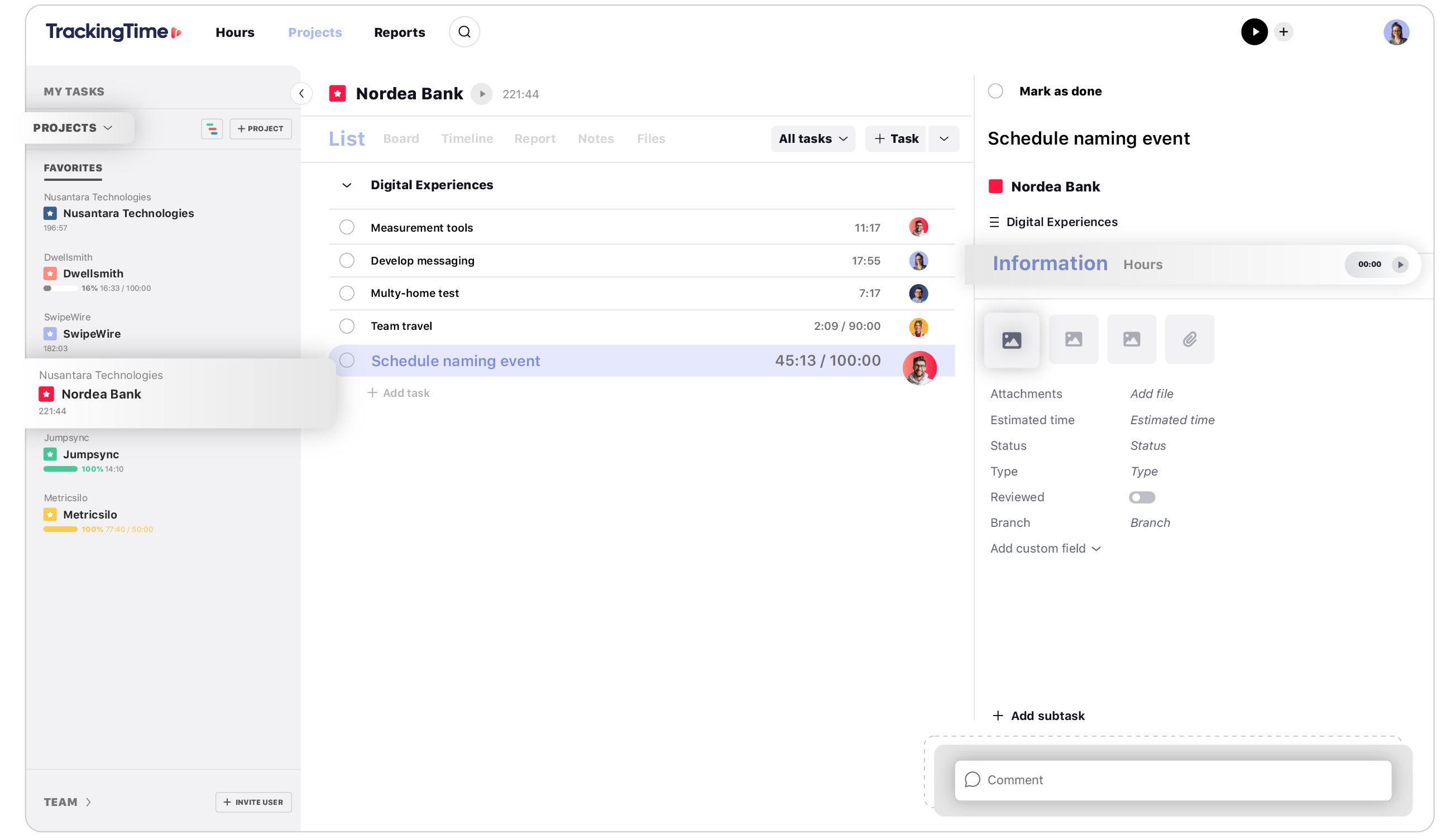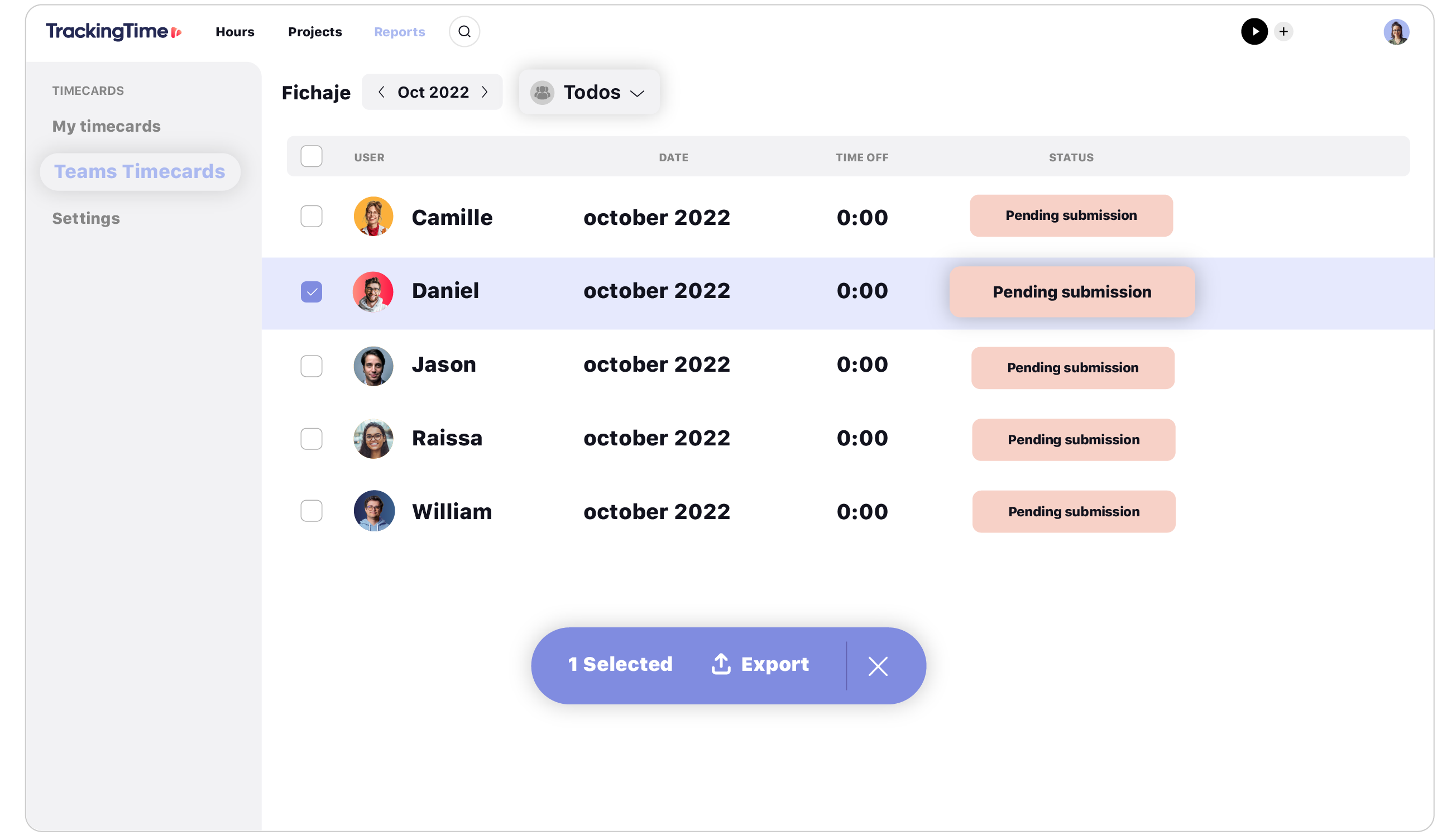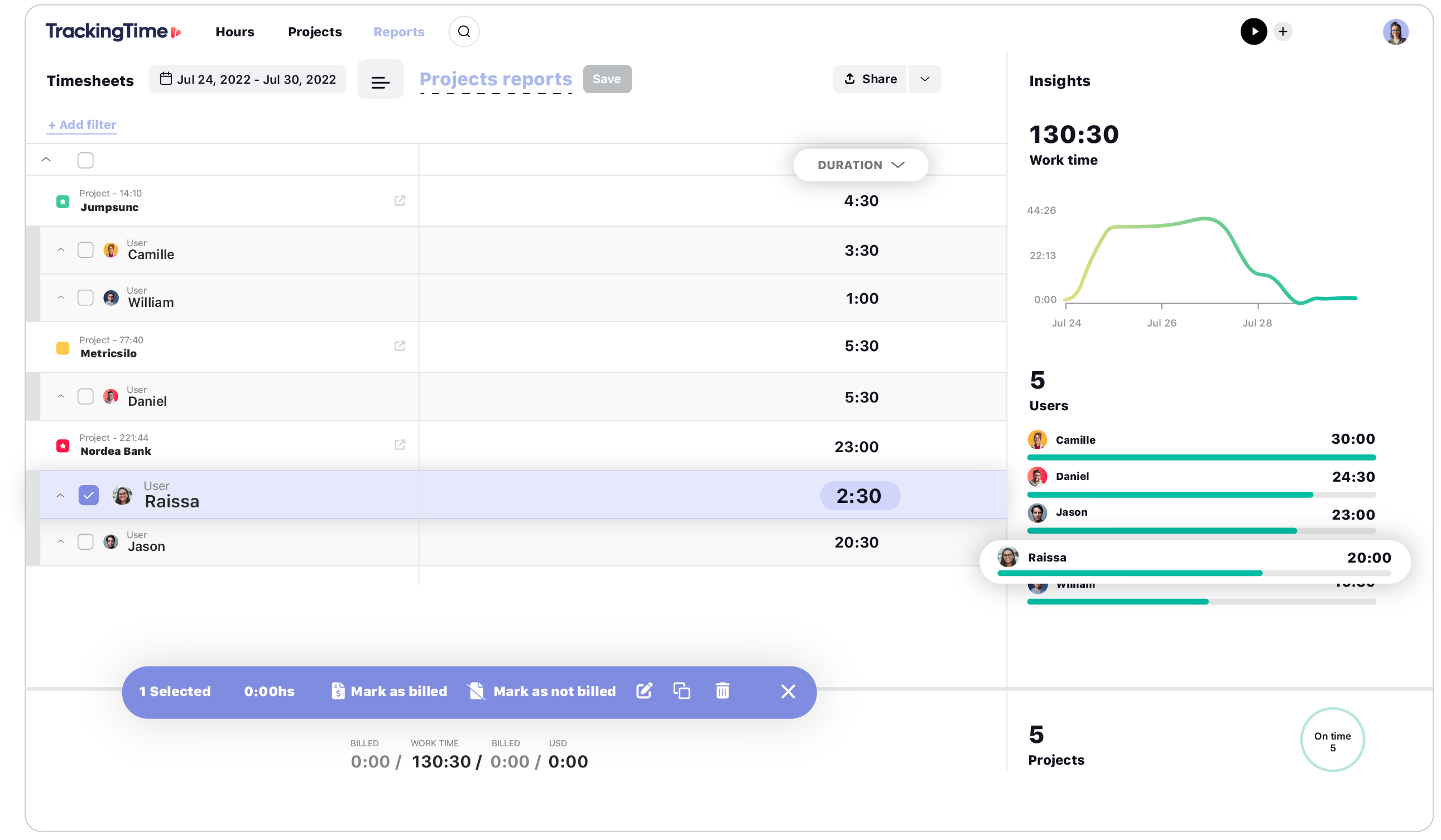Free Time Card Calculator
The time card calculator allows HR managers to track working hours and attendance for employees. They help users with time management, absence and leave management, as well as overtime tracking.
What Is a Time Card Calculator?
A time card is a method for recording and tracking the amount of an employee’s time spent on each job. The time card calculator generates easily printable weekly time reports based on worked hours and rates. The calculator accepts most time formats, such as 8:00AM, 8.30, 15:30, etc. This tool helps managers, business owners, and employees by calculating the total number of hours worked for every staff member.
How Does the Time Card Calculator Work?
Thinking about our users, we made this time card as simple as possible. Time card is used to record the start and end times of tasks or simply the duration of the task. Timecards may contain a detailed breakdown of tasks accomplished by the individual(s) who worked on the task. The information can be used for project costing, job estimation, tracking, management, client billing, and payroll.
Now to fill out the time card calculator you need to follow the next steps:



Why Is a Time Card Calculator Useful?
Time cards helps every company, manager or employee to organize the worked hours and know the amount of hours that each employee work to make the corresponding payroll.
In addition to providing data about the amount of time devoted to tasks, and hence the costs associated with those tasks, time card can also be used to build a body of knowledge about how much effort tasks take to develop. For example, if developing a training plan has historically taken a month, then it can be assumed that creating a new one will take a month. Time card is a great asset in project management.
Many businesses stick to Excel since a time card is essentially a spreadsheet, but with an automated time card like Homebase’s timesheets, you’ll never have to worry about spreadsheet errors or inaccurate hours again.
What Can a Time Card Calculator Do for You?
- Calculate Working Hours
- Deducting Break Time
- Calculate Pay
- Calculate Overtime
- Recordkeeping
- Calculate Billable Rates per Hour Worked
Time Tracker Software for Your Business
Using a time tracker software to measure your employees is a must, time cards of TrackingTime benefit not only the employer but the employee. You can improve the monitoring of your employees, eliminate absenteeism, and maintain order in the payment of payroll automatically which will result in a significant increase in productivity.
Main Benefits of Measuring Attendance with TrackingTime
- Saves money: With TrackingTime, employees clock in and out digitally, which saves money by reducing inaccurate time reporting, buddy punching, and overpayment.
- Data accuracy leads to better payroll processing: Manual attendance tracking is prone to human error, which can result in over or underpaying employees. With a time tracking software, information is automatically logged in the database, so payroll processing can be performed accurately.
- Real-time visibility into employee schedules: Managers can instantly access employee schedules and manage their staffing accordingly. With the help of customized reports, managers can have a quick snapshot of employee data such as absences, overtime, and hours worked, which helps in improving overall productivity.
Stay Compliant with FLSA Labor Regulations
The best strategy for avoiding FLSA non-compliance is to ensure accurate record-keeping and time-tracking, as well as the proper classification of employees. It’s a good idea for business owners to seek professional guidance before making decisions about how to track hours, and before declaring employees exempt or non-exempt. Although these may seem like straightforward issues, they’re often complex and subject to regulatory changes.
Stay on Top of Employee Attendance with TrackingTime
FAQs:
Time cards are useful for various purposes in a company. They assist in monitoring employee attendance, ensuring compliance with labor regulations, and accurately calculating wages. Time cards also aid in project management, tracking billable hours, evaluating productivity levels, and generating reports for budgeting and forecasting purposes.
Time cards are used to track and record the amount of time an employee spends on various tasks or projects. They involve logging in and out of work, recording break times, and specifying the activities performed during the workday. Time cards provide an organized way to monitor and manage employee work hours.
Working with time cards offers several advantages. They enable accurate tracking of employee work hours, facilitating efficient payroll processing. Time cards also provide valuable insights into productivity levels, task distribution, and resource allocation. Additionally, they help with project management by allowing managers to monitor progress and ensure timely completion of tasks.
Calculating time cards involves tallying the hours worked by employees based on the recorded start and end times. It also considers any breaks or overtime hours. This information is used to determine the total hours worked, which is essential for payroll calculations and evaluating employee productivity.
Automatic time cards offer distinct advantages over manual time cards. Unlike manual entries that are prone to errors and inaccuracies, automatic time cards leverage technology to precisely track employee work hours. They eliminate the need for manual calculations, provide real-time data, and offer seamless integration with other systems, streamlining administrative tasks.
Time cards play a crucial role in enhancing operational efficiency and optimizing workforce management. They provide transparency and accountability in tracking employee attendance, enabling fair compensation and accurate resource planning. Time cards also contribute to identifying areas for process improvement, facilitating better decision-making, and maximizing productivity.